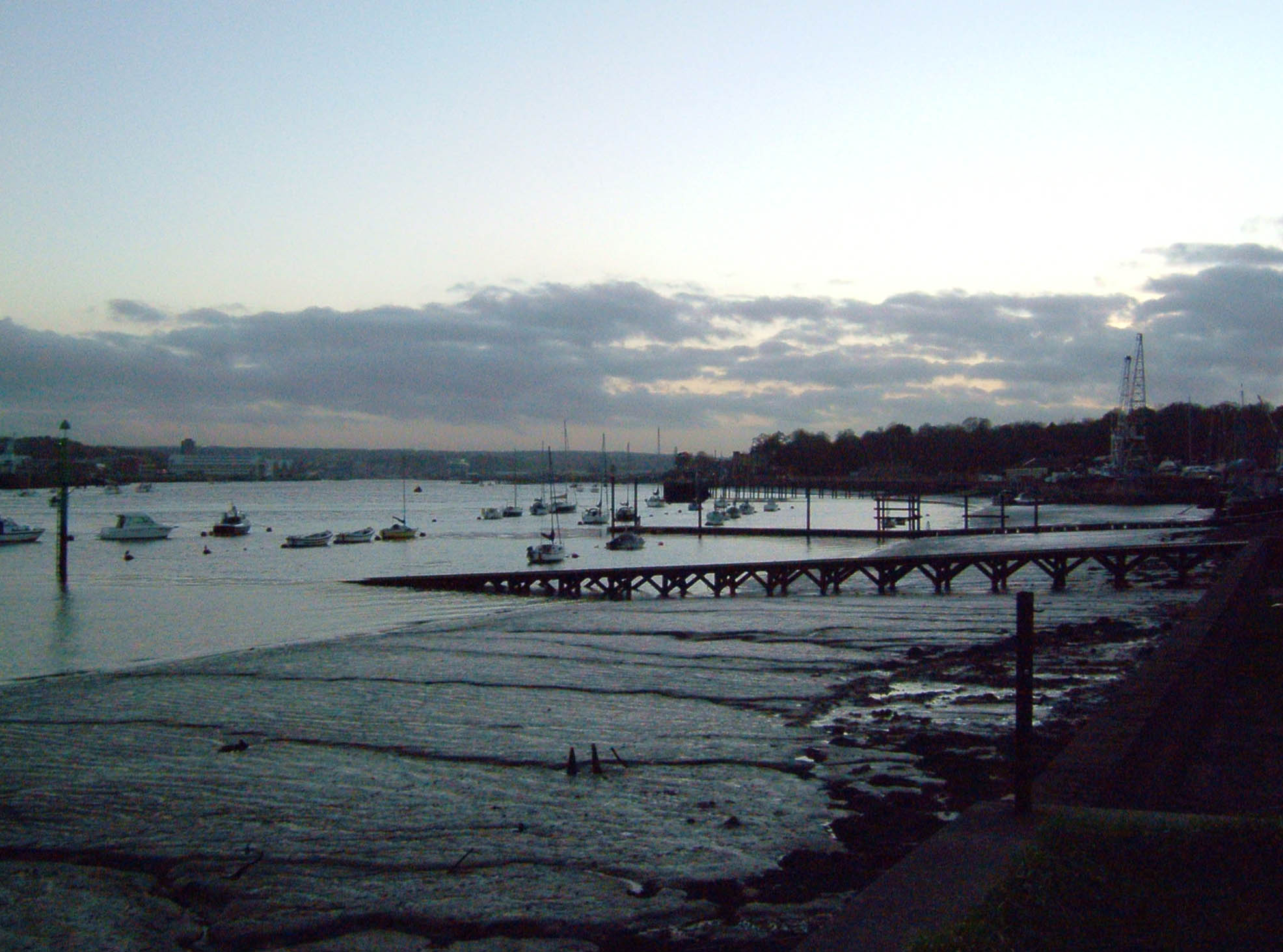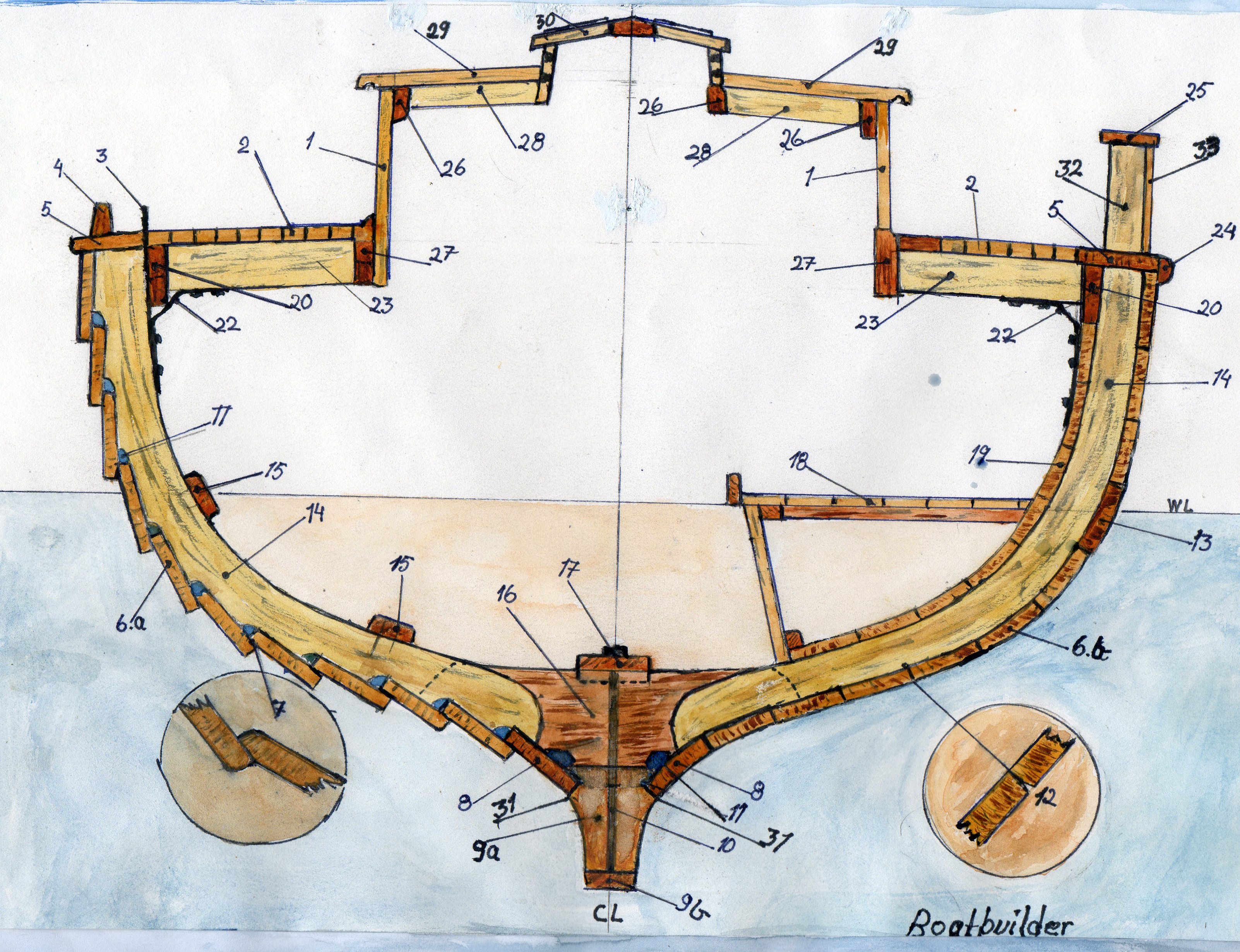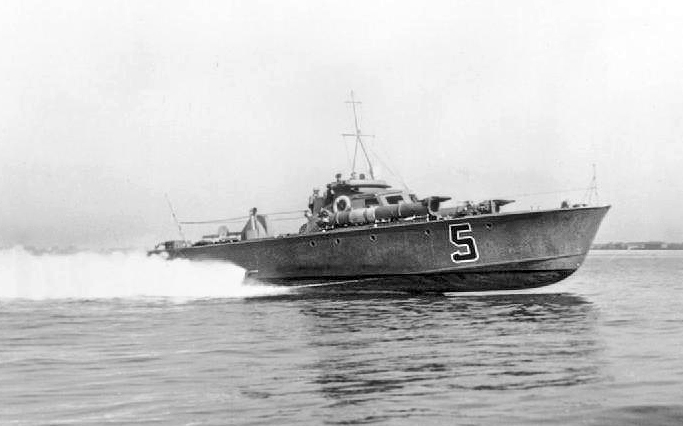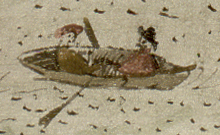|
SB Pudge
SB ''Pudge'' is a wooden Thames sailing barge, built in Rochester, Kent, England in 1922. Her hull was pitch pine on oak frame. She was originally spritsail rigged with bowsprit. An auxiliary oil engine made by The Bergius Co.Ltd of Glasgow was installed in 1932. She was used to carry various cargoes for the London & Rochester Trading Co until 1968, when she was bought out of trade by the Thames Sailing Barge Trust. Her last cargo was pineapple juice. History Thames sailing barges were the heavy goods vehicles of their time, moving 150 tons of loose cargo at a time from outside the capital to the city. They brought in coal for the furnaces, bricks to construct mills and houses, and hay for the horses. Barges were used to transport rubbish from various cities out to the brickfields where it was used as fuel; it was only for the last mile of the trip to the brickfields that road transport had to be used. The spritsail rig has many advantages on rivers and in confined waters: ... [...More Info...] [...Related Items...] OR: [Wikipedia] [Google] [Baidu] |
River Medway
The River Medway is a river in South East England. It rises in the High Weald, East Sussex and flows through Tonbridge, Maidstone and the Medway conurbation in Kent, before emptying into the Thames Estuary near Sheerness, a total distance of . About of the river lies in East Sussex, with the remainder being in Kent. It has a catchment area of , the second largest in southern England after the Thames. The map opposite shows only the major tributaries: a more detailed map shows the extensive network of smaller streams feeding into the main river. Those tributaries rise from points along the North Downs, the Weald and Ashdown Forest. Tributaries The major tributaries are: * River Eden * River Bourne, known in the past as the Shode or Busty * River Teise, major sub-tributary River Bewl * River Beult * Loose Stream * River Len Minor tributaries include: * Wateringbury Stream * East Malling Stream * River Grom Former minor tributaries include the Old Bourne ... [...More Info...] [...Related Items...] OR: [Wikipedia] [Google] [Baidu] |
Dunkirk Evacuation
The Dunkirk evacuation, codenamed Operation Dynamo and also known as the Miracle of Dunkirk, or just Dunkirk, was the evacuation of more than 338,000 Allied soldiers during the Second World War from the beaches and harbour of Dunkirk, in the north of France, between 26 May and 4 June 1940. The operation commenced after large numbers of Belgian, British, and French troops were cut off and surrounded by German troops during the six-week Battle of France. In a speech to the House of Commons, British Prime Minister Winston Churchill called this "a colossal military disaster", saying "the whole root and core and brain of the British Army" had been stranded at Dunkirk and seemed about to perish or be captured. In his " We shall fight on the beaches" speech on 4 June, he hailed their rescue as a "miracle of deliverance". After Germany invaded Poland in September 1939, France and the British Empire declared war on Germany and imposed an economic blockade. The British Expediti ... [...More Info...] [...Related Items...] OR: [Wikipedia] [Google] [Baidu] |
1922 Ships
Nineteen or 19 may refer to: * 19 (number), the natural number following 18 and preceding 20 * one of the years 19 BC, AD 19, 1919, 2019 Films * ''19'' (film), a 2001 Japanese film * ''Nineteen'' (film), a 1987 science fiction film Music * 19 (band), a Japanese pop music duo Albums * ''19'' (Adele album), 2008 * ''19'', a 2003 album by Alsou * ''19'', a 2006 album by Evan Yo * ''19'', a 2018 album by MHD * ''19'', one half of the double album '' 63/19'' by Kool A.D. * '' Number Nineteen'', a 1971 album by American jazz pianist Mal Waldron * ''XIX'' (EP), a 2019 EP by 1the9 Songs * "19" (song), a 1985 song by British musician Paul Hardcastle. * "Nineteen", a song by Bad4Good from the 1992 album ''Refugee A refugee, conventionally speaking, is a displaced person who has crossed national borders and who cannot or is unwilling to return home due to well-founded fear of persecution. [...More Info...] [...Related Items...] OR: [Wikipedia] [Google] [Baidu] |
Thames Sailing Barges
The River Thames ( ), known alternatively in parts as the River Isis, is a river that flows through southern England including London. At , it is the longest river entirely in England and the second-longest in the United Kingdom, after the River Severn. The river rises at Thames Head in Gloucestershire, and flows into the North Sea near Tilbury, Essex and Gravesend, Kent, via the Thames Estuary. From the west it flows through Oxford (where it is sometimes called the Isis), Reading, Henley-on-Thames and Windsor. The Thames also drains the whole of Greater London. In August 2022, the source of the river moved five miles to beyond Somerford Keynes due to the heatwave in July 2022. The lower reaches of the river are called the Tideway, derived from its long tidal reach up to Teddington Lock. Its tidal section includes most of its London stretch and has a rise and fall of . From Oxford to the Estuary the Thames drops by 55 metres. Running through some of the dr ... [...More Info...] [...Related Items...] OR: [Wikipedia] [Google] [Baidu] |
Coot Club
''Coot Club'' is the fifth book of Arthur Ransome's Swallows and Amazons series of children's books, published in 1934. The book sees Dick and Dorothea Callum visiting the Norfolk Broads during the Easter holidays, eager to learn to sail and thus impress the Swallows and Amazons when they return to the Lake District later that year. Along with a cast of new characters, Dick and Dorothea explore the North and South Broads and become 'able seamen'. Plot summary The Callum children spend their Easter holidays on The Broads with family friend, Mrs Barrable, who is staying on the small yacht ''Teasel'', moored near the village of Horning. There they encounter the Coot Club, a gang of local children comprising Tom Dudgeon, twin girls 'Port' and 'Starboard' (Nell and Bess Farland), and three younger boys — Joe, Bill and Pete (the "Death and Glories"). The Coot Club was formed to protect local birds and their nests from egg collectors and other disturbances. Protecting wild birds w ... [...More Info...] [...Related Items...] OR: [Wikipedia] [Google] [Baidu] |
SB Centaur
SB ''Centaur'' is a wooden Thames sailing barge, built in Harwich, Essex, England in 1895. She was used to carry various cargoes, mainly grain, for the next 60 years. During the First World War she carried food and coal to the French Channel ports. During the Second World War Centaur was damaged when sailing to assist with the Dunkirk Evacuation. She did war work for the duration of the conflict. In 1945 she returned to the grain trade until 1955, when she was derigged. Between 1955 and 1966 she was used as a lighter until bought in 1966 by Richard Duke to re-rig as a charter barge. She was sold in 1973 to the charity Thames Barge Sailing Club (now the Thames Sailing Barge Trust). Restored between 1984 and 1993, and further in 2013, she now berths at Hythe Quay, Maldon. Description Thames sailing barges were commercial sailing vessels once common on the River Thames in London. The flat-bottomed barges with a shallow draught and leeboards, were well adapted to the shallow, n ... [...More Info...] [...Related Items...] OR: [Wikipedia] [Google] [Baidu] |
Keelson
The keelson or kelson is a reinforcing structural member on top of the keel in the hull of a wooden vessel. In part V of “Song of Myself”, American poet Walt Whitman Walter Whitman (; May 31, 1819 – March 26, 1892) was an American poet, essayist and journalist. A humanist, he was a part of the transition between transcendentalism and realism, incorporating both views in his works. Whitman is among ... uses the phrase: “And that a kelson of the creation is love;” to imply that love is akin to a keelson, or backbone, that supports humanity. References {{Sailing ship elements Nautical terminology Shipbuilding ... [...More Info...] [...Related Items...] OR: [Wikipedia] [Google] [Baidu] |
Chine (boating)
A chine in boat design is a sharp change in angle in the cross section of a hull. The chine typically arises from the use of sheet materials (such as sheet metal or marine ply) as the mode of construction. Rationale of chines Using sheet materials in boat construction is cheap and simple, but whereas these sheet materials are flexible longitudinally, they tend to be rigid vertically. Examples of steel vessels with hard chines include narrowboats and widebeams; examples of plywood vessels with hard chines include sailing dinghies such as the single-chined Graduate (dinghy), Graduate and the double-chined Enterprise (dinghy), Enterprise. Although a hull made from sheet materials might be unattractively "slab-sided", most chined hulls are designed to be pleasing to the eye and hydrodynamics, hydrodynamically efficient. Hulls without chines (such as clinker-built or carvel-built vessels) usually have a gradually curving cross section. A hard chine is an angle with little rou ... [...More Info...] [...Related Items...] OR: [Wikipedia] [Google] [Baidu] |
Pinus Rigida
''Pinus rigida'', the pitch pine, is a small-to-medium-sized pine. It is native to eastern North America, primarily from central Maine south to Georgia and as far west as Kentucky. It is found in environments which other species would find unsuitable for growth, such as acidic, sandy, and low-nutrient soils. Description The pitch pine is irregular in shape, but grows to ). Branches are usually twisted, and it does a poor job at self-pruning. The needles are in fascicles (bundles) of three, about in length, and are stout (over broad) and often slightly twisted. The cones are long and oval, with prickles on the scales. Trunks are usually straight with a slight curve, covered in large, thick, irregular plates of bark. Pitch pine has an exceptionally high regenerative ability; if the main trunk is cut or damaged by fire, it can re-sprout using epicormic shoots. This is one of its many adaptations to fire, which also include a thick bark to protect the sensitive cambium layer from ... [...More Info...] [...Related Items...] OR: [Wikipedia] [Google] [Baidu] |
Ramsgate
Ramsgate is a seaside town in the district of Thanet in east Kent, England. It was one of the great English seaside towns of the 19th century. In 2001 it had a population of about 40,000. In 2011, according to the Census, there was a population of 40,408. Ramsgate's main attraction is its coastline, and its main industries are tourism and fishing. The town has one of the largest marinas on the English south coast, and the Port of Ramsgate provided cross- channel ferries for many years. History Ramsgate began as a fishing and farming hamlet. The Christian missionary St Augustine, sent by Pope Gregory the Great, landed near Ramsgate in 597AD. The town is home to the Shrine of St Augustine. The earliest reference to the town is in the Kent Hundred Rolls of 1274–5, both as ''Remmesgate'' (in the local personal name of ‘Christina de Remmesgate’) and ''Remisgat'' (with reference to the town). The names ''Ramisgate'' and ''Raunsgate'' appear in the parish of St. Lauren ... [...More Info...] [...Related Items...] OR: [Wikipedia] [Google] [Baidu] |
Dover
Dover () is a town and major ferry port in Kent, South East England. It faces France across the Strait of Dover, the narrowest part of the English Channel at from Cap Gris Nez in France. It lies south-east of Canterbury and east of Maidstone. The town is the administrative centre of the Dover District and home of the Port of Dover. Archaeological finds have revealed that the area has always been a focus for peoples entering and leaving Britain. The name derives from the River Dour that flows through it. In recent times the town has undergone transformations with a high-speed rail link to London, new retail in town with St James' area opened in 2018, and a revamped promenade and beachfront. This followed in 2019, with a new 500m Pier to the west of the Harbour, and new Marina unveiled as part of a £330m investment in the area. It has also been a point of destination for many illegal migrant crossings during the English channel migrant crisis. The Port of Dover provides mu ... [...More Info...] [...Related Items...] OR: [Wikipedia] [Google] [Baidu] |
Tilbury
Tilbury is a port town in the borough of Thurrock, Essex, England. The present town was established as separate settlement in the late 19th century, on land that was mainly part of Chadwell St Mary. It contains a 16th century fort and an ancient cross-river ferry. Tilbury is part of the Port of London with a major deep-water port which contributes to the local economy. Situated 24 miles (38.5 km) east of central London and 23 miles (37 km) southwest of Southend-on-Sea (the nearest city), it is also the southernmost point in Essex. Etymology The name of the present town of Tilbury is derived (by way of the port) from the nearby settlements of East and West Tilbury. The name of these settlements is derived from the Saxon ''burgh'', "fortified place", either belonging to Tila, or perhaps at a lowland place. The 8th century spelling ( Bede) was "Tilaburg", and the spelling in Domesday was "Tilberia". History Tilbury's history is closely connected with its geographical loc ... [...More Info...] [...Related Items...] OR: [Wikipedia] [Google] [Baidu] |





